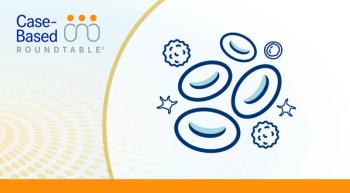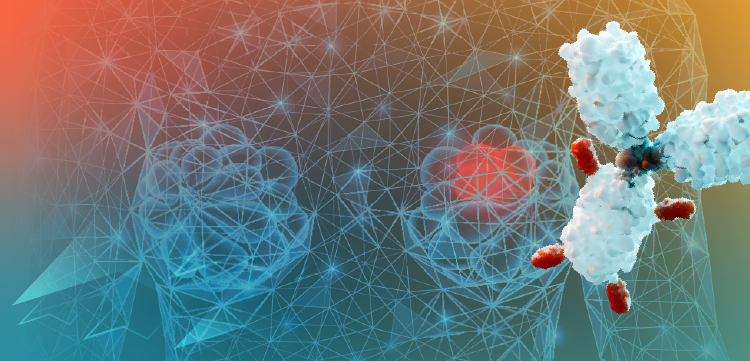
AlloHeme Enhances Early Relapse Detection in AML and MDS Post-Transplant
Monzr M. Al Malki, MD, discussed data for AlloHeme, a blood test used to detect risk of relapse post-transplant in patients with AML and MDS.
AlloHeme, a highly sensitive, noninvasive blood test, demonstrated superior sensitivity compared with traditional methods in patients with acute myeloid leukemia (AML) and myelodysplastic syndrome (MDS) in detecting a risk of relapse posttransplant.1
At the 2025 Tandem Meetings, Monzr M. Al Malki, MD, presented the results for AlloHeme,which uses next-generation sequencing (NGS) to monitor chimerism levels for patients after transplant. AlloHeme provides early warning of relapse to help with timely interventions after allogeneic hematopoietic stem cell transplantation (allo-HSCT).
In an interview with Targeted Oncology, Al Malki, a professor in the Department of Hematology & Hematopoietic Cell Transplantation, director of the unrelated donor bone marrow transplant and haploidentical transplant programs at City of Hope, and medical director at the City of Hope Histocompatibility & Immunogenetics Laboratory, discussed AlloHeme and the results of the ACROBAT trial (NCT04635384).
Targeted Oncology: What is the mechanism of action of AlloHeme, and how does it detect early relapse in patient with AML and MDS post-transplant?
Monzr M. Al Malki, MD: AlloHeme is a noninvasive blood test that monitors posttransplant chimerism levels after a patient undergoes a transplant using highly sensitive NGS-based approach.
Chimerism is defined as the state in which there exist 2 different sets of genetic material, or genomes, within an individual. In the case of HSCT, the donor’s hemopoietic stem cells account for one genome and the recipient’s own residual diseased blood cells account for the second genome. A successful transplant is when 100% of the donor’s cells have engrafted and stayed engrafted over time.
When we see mixed chimerism, especially after the donor cells have fully engrafted, it most likely means that the patient’s/recipient’s diseased cells are returning, which is very prognostic for impending relapse.
How does AlloHeme compare with traditional methods like short tandem repeat (STR)-PCR analysis in terms of sensitivity, specificity, and predictive value for detecting relapse?
The limit of detection for mixed chimerism using the current standard with STR-PCR methods is between 1% and 5%, while this is less than 1% [0.2%] when AlloHeme is used. AlloHeme is significantly more sensitive for assessing levels of chimerism compared with the standard STR-PCR–based methods.
What were the key findings from the interim analysis of the ACROBAT trial?
ACROBAT was a prospective multicenter clinical trial conducted over 2 years. The 1-year interim analysis presented in the Tandem Meetings indicated that AlloHeme was more sensitive in detecting mixed chimerism compared with standard STR-PCR–based methods and patients with increased mixed chimerism had significant risk of AML/MDS disease relapse post transplantation. Additionally, AlloHeme offered a clinically meaningful median lead time to relapse of 36 days prior to frank relapse to all-HSCT for intervention.
With these results, we are positioned now to move into interventional trials where interventions like withdrawal of immune suppressive therapy or low-intensity hypomethylating agents with or without donor lymphocyte infusions could be promising when it is done guided by such a test.
This is a 2-year study, and the data presented were based on a 1-year analysis of the ACROBAT trial. We look forward to reviewing and publishing the final results from the 2-year data upon completion of the study. Future interventional trials will be promising after.
What are the potential limitations or challenges of using AlloHeme in clinical practice?
The data presented was mostly on patients with AML/MDS undergoing an allo-HSCT. One can expect good performance in patients with acute lymphoblastic leukemia treated with stem cell transplant when ACROBAT is complete. A potential pitfall is the test limits its applicability where the donor is genetically an identical twin of the patient.
How can the early detection of increased mixed chimerism impact patient outcomes?
The significant lead time to morphologic relapse detection enabled by AlloHeme could allow early intervention strategies, such as immune suppression therapy modification, use of donor lymphocyte infusion, targeted therapies, and others; and potentially prevent full-blown morphologic relapse.
With the interim 1-year analysis of ACROBAT, AlloHeme—when it is done as in the study which is every 2 weeks for 3 months, monthly for 3, then quarterly after—performance indicates that it can be a useful tool in monitoring for relapse risk in patients post-HSCT. On one hand, it can allow physicians to identify impending relapses and institute appropriate treatment measures. On the other hand, if the test is consistently negative, it can inform the low likelihood of disease relapse after HSCT.
Reference:
1. Al Malki MM, Sobecks R, Cutler C, et al. CD33 Microchimerism assessment by AlloHeme predicts early relapse in patients with AML/MDS—interim results from the ACROBAT multicenter study. Presented at: 2025 Tandem Meetings, Honolulu, Hawaii, February 12-15. Abstract 7.









































